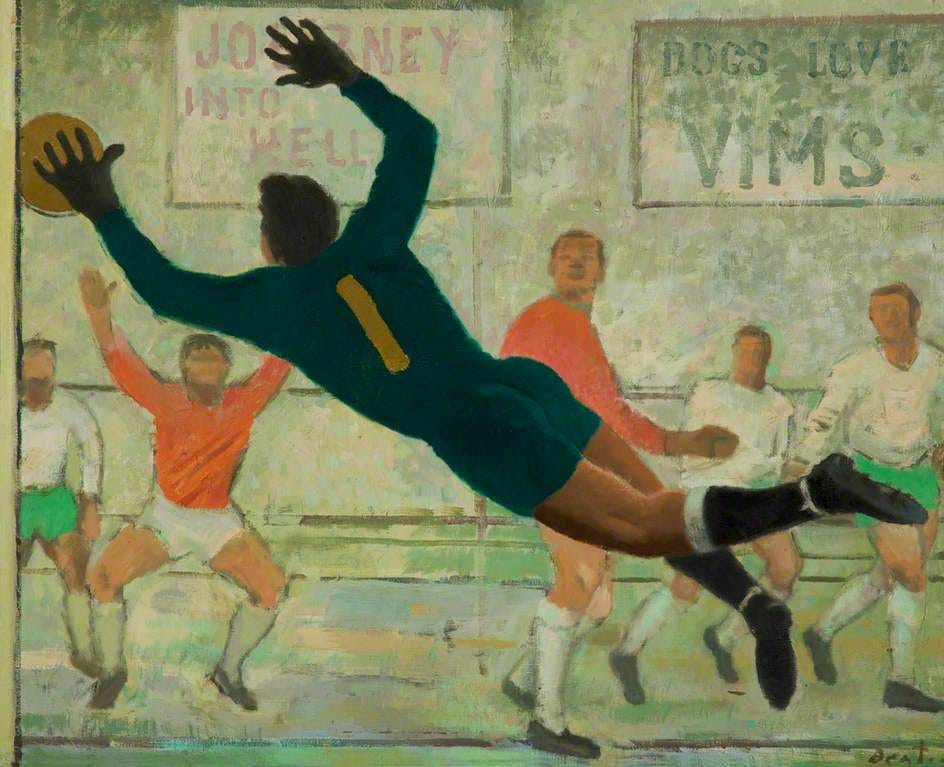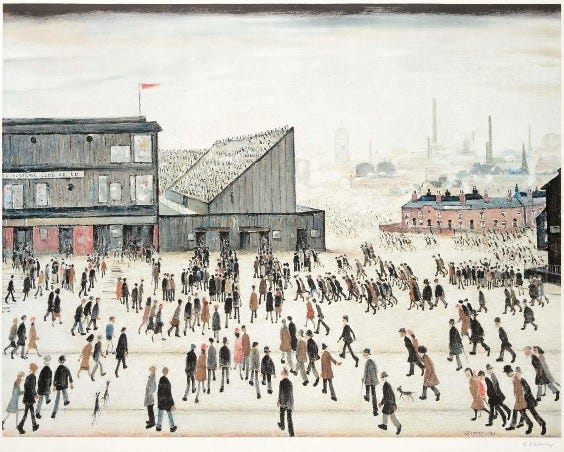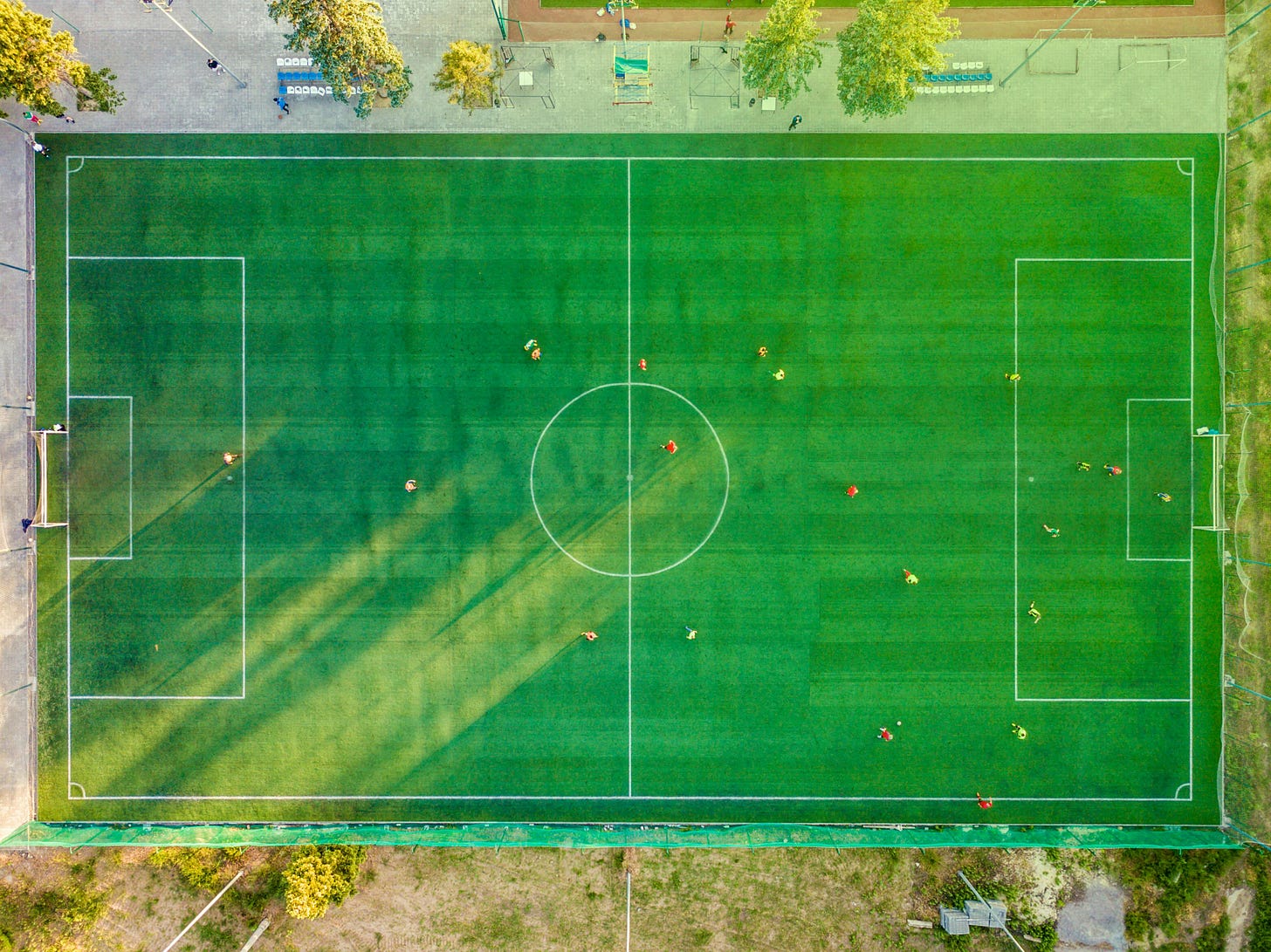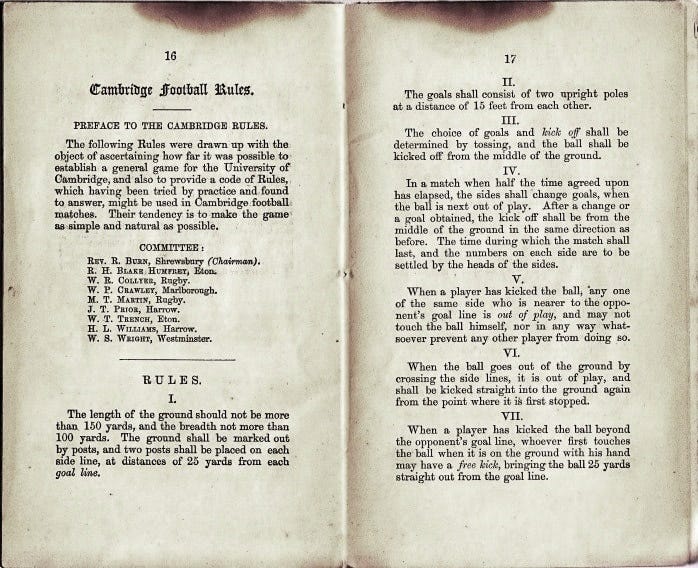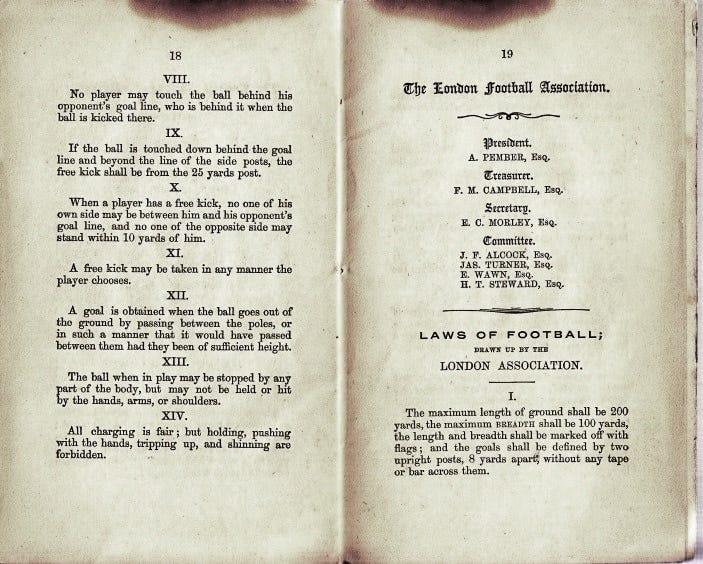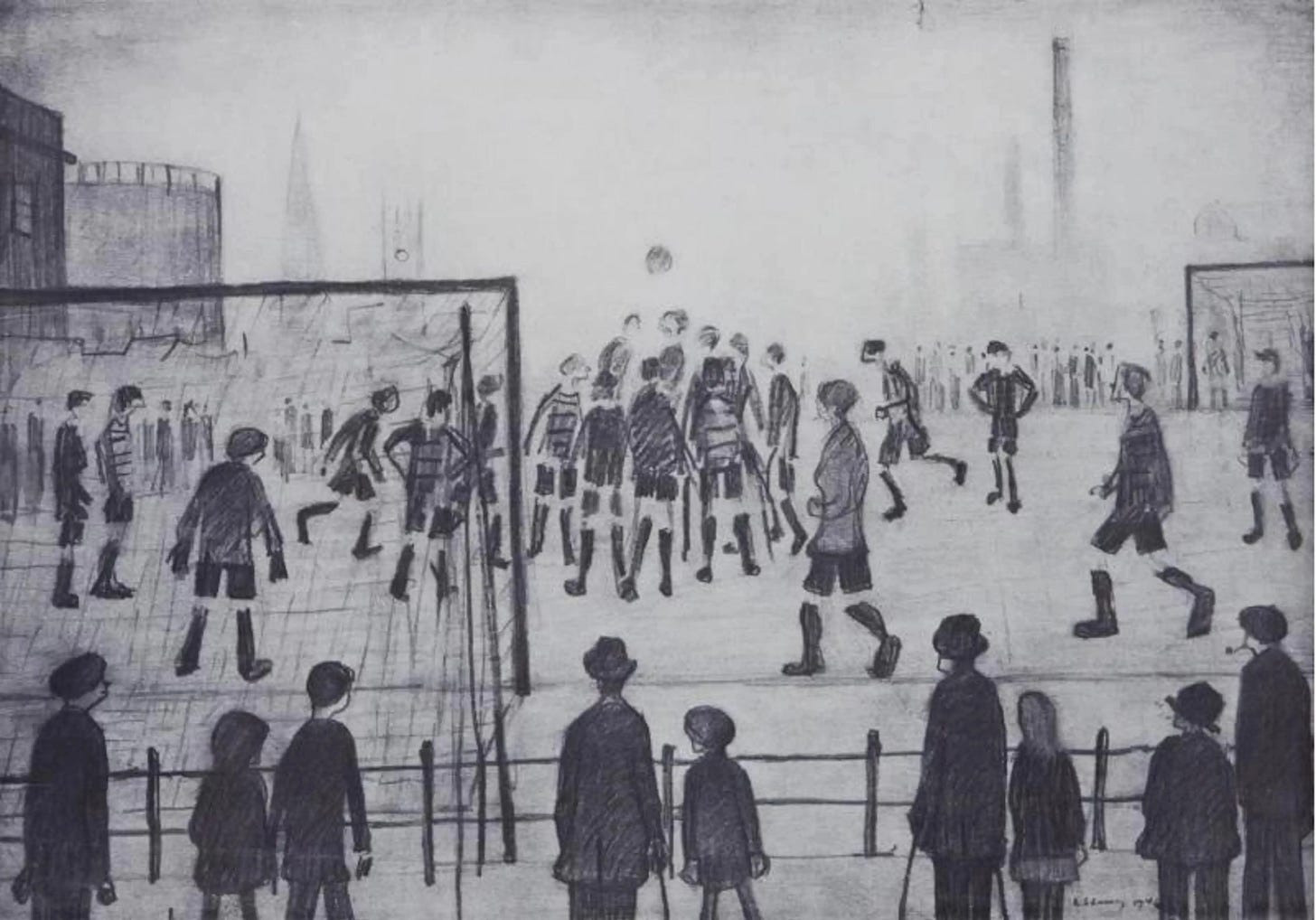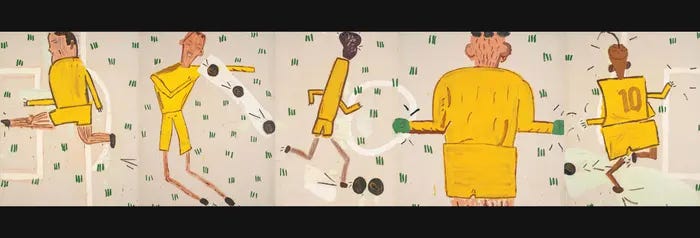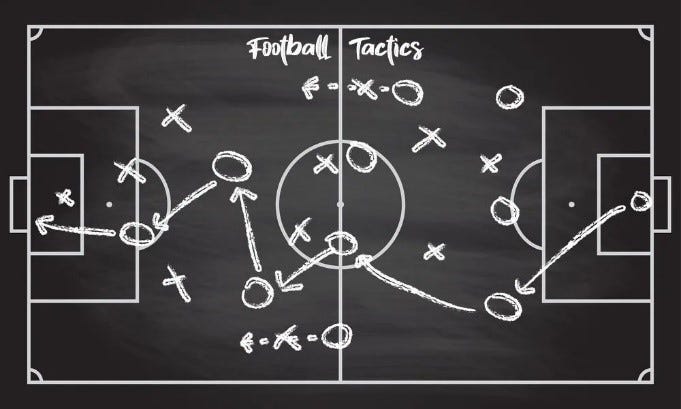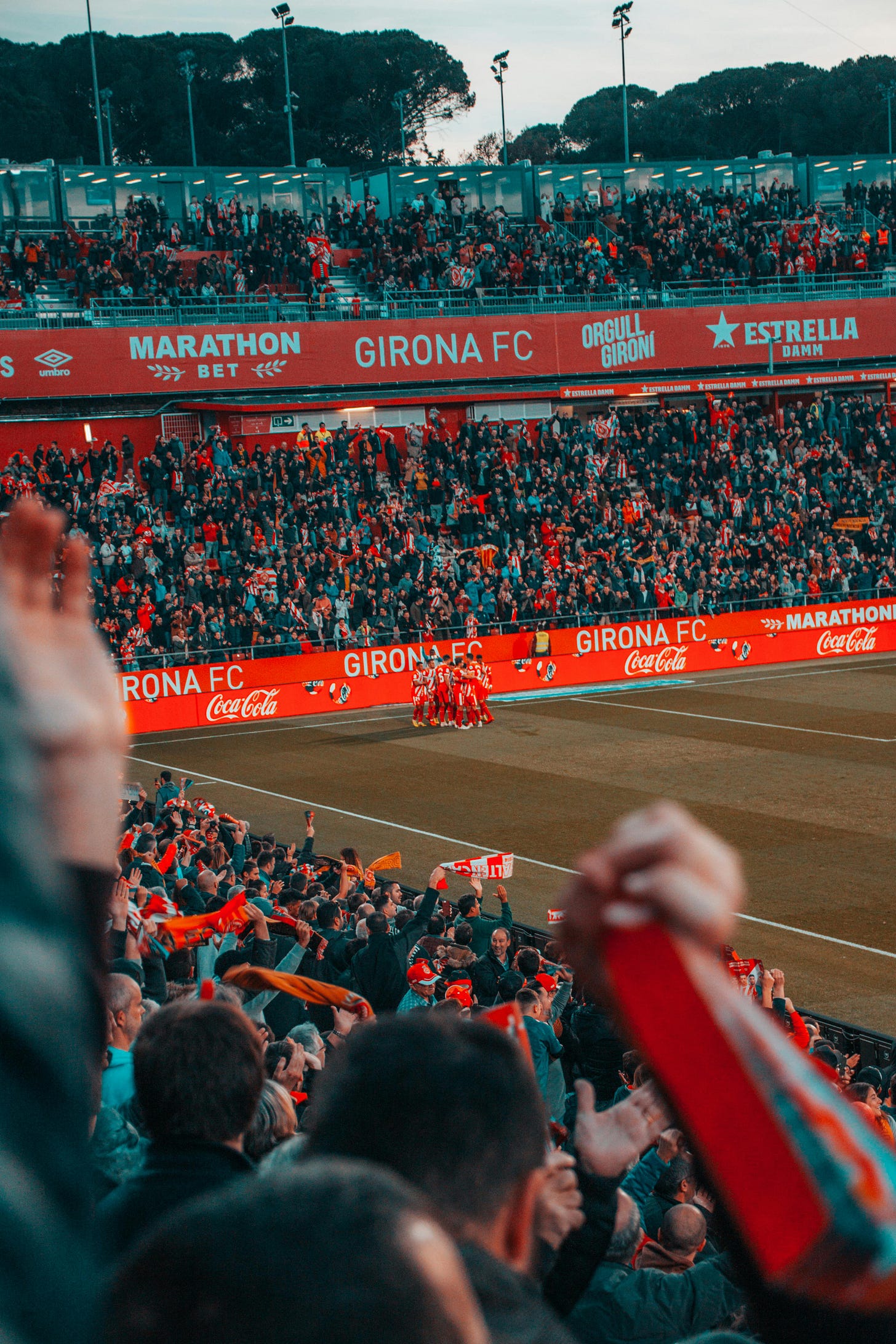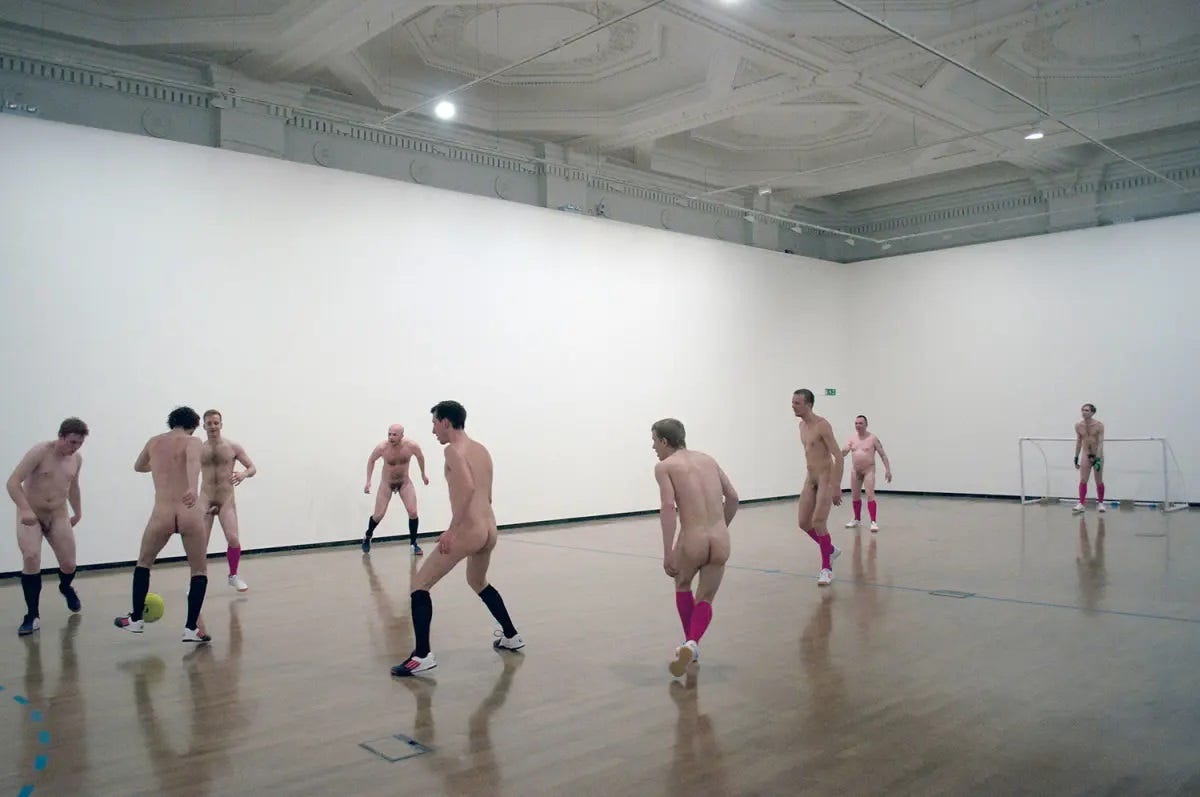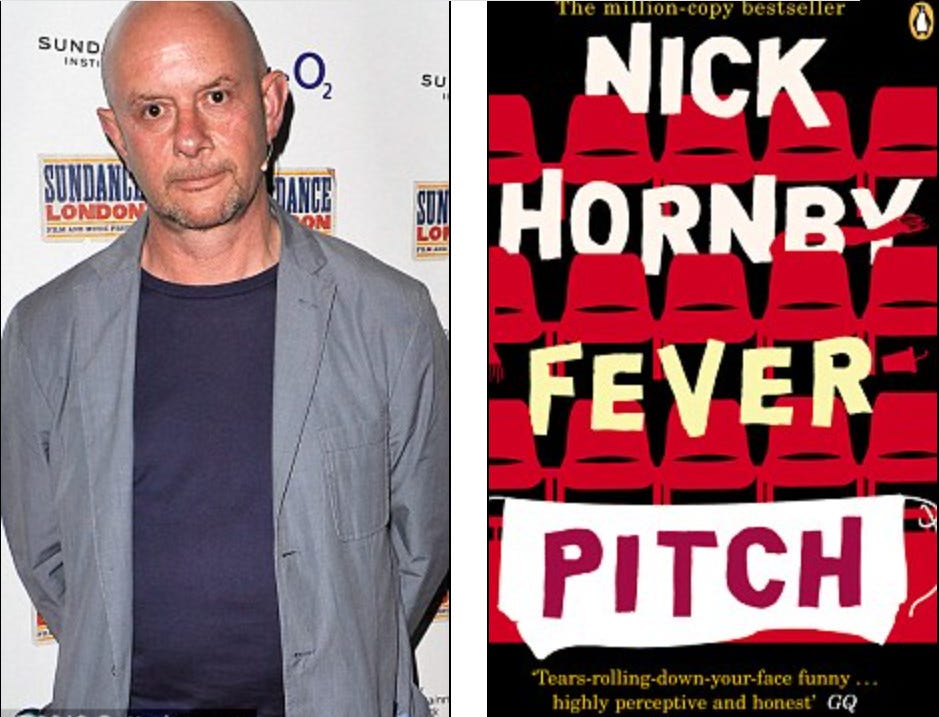Which way is the best, and how, to watch soccer (for non-believers!)
A fully illustrated and referenced, cultural, scientific, strategic, psychological and artistic long-form deep-dive analysis of the world’s most popular game… for non-believers!
Which way is the best, and how, to watch soccer (for non-believers)?
Have you never understood what anyone sees in soccer? Is your partner an avid fan but it pains you to sit beside them on the sofa and find it impossible to share their passion? If soccer turns you totally off, but you wish you could enjoy a fraction of the entertainment most of the rest of the world do, this may be the solution you need, from a former die-hard non-believer! And who knows, if you really know football, it just might make you look at the beautiful game differently, too!
Total words: 2511
Reading time: 10 mins
Warning: Contains profanity, naked images of men, and a nod to Wrexham AFC (which is probably worse!)
I could never kick a football in school games. My teammates would elicit groans when the ball came anywhere near me as a kid. My father on the sidelines would wince in shame when I hit the ball towards the wrong goal (I know, I winced watching him instead of the ball, for help!) and he would be otherwise permanently incommunicado except when once a week he would deign to grunt at me to be quiet when the football was on our rental Granada TV and I tried to show interest by asking a question like, why do they kick it that way? (Ahh, those were the days!) Needless to say, I grew up hating the game and never saw the point of anyone kicking a sheep’s inflated bladder, either way, around on a well-manicured, but suffering like I did, lawn. But people have turned up in their masses to watch the game for a hundred years.
Here is the artistic, cultural and scientific 101 low-down on the beautiful game for those desperate to see the point, as I did.
If you search Google yourself for “soccer academic research” you will find there are over 700,000 results. I am only going to give you the ones that matter to understand the main principles enough to enjoy watching soccer.
This is the story of what changed my mind… forever.
Let me try and change yours!
This should be fun and, if not life-changing, at least take your mind off your real problems when you realise soccer is, truly, your best source of relief and escape from the real world.
Key Findings
1 Think of the players of a team moving as one ‘brain’ working collectively.
2 The football being that perfect symmetry of infinite three-dimensional possibility.
3 Team structure is vital to tactics and a way of the one ‘brain’ solving the puzzle to score, from earliest 1-1-9 to the classic pyramid system (1-2-3-5) to modern 4-2-3-1.
4 Both teams are continuously switching between phases of offensive (possession and direct play styles) and defensive (pressing and defensive safety styles).
5 The three ways of watching are Follow-the-ball, Predict-the-sequence and Assess-the-strategy
What is soccer?
Soccer is played by “250 million people in more than 200 countries, making it the world’s most popular sport [1],” but you probably couldn’t disagree more. Let’s start with the basics.
Objective: Soccer is a game between two teams of eleven people trying to score the most goals in the opposing teams net, yawn, within 90 minutes–but you probably know that already (bonus points if you don’t!)– and you are wrong; it is a work of art!
PART 1: ART WITHOUT THE SCIENCE
I was wandering through the Tate Modern alone, as I used to do every Sunday once a month because I couldn’t get a date (We’ve all been there! Probably because I didn’t like football!) when I noticed a curious video display on a wall at the end of a narrow bleach-white corridor that would begin to change my perception forever.
It was proof that art can be life-changing and why I am writing this a quarter of a century later, but maybe it was just my lonely imagination?
This innocuous at first digital display seemed to portray blue and red, seemingly random, dots moving in a pattern on a big white video screen against each other. What were the dots doing? I stepped a bit closer, attracted by the pattern of movement, nothing else. They seemed to have a mind of their own. It was like an algorithm thinking in real time against itself.
My immediate thought was it was some kind of computer playing chess (I wasn’t too far wrong!) Why were the dots doing this? I moved closer.
I noticed it wasn’t any one dot. That was key. Somehow, weirdly, it seemed like the movement of the dots was a kind of communication. Dots communicating, in ensemble, like some higher brain? Is that possible, or was I totally fooled by their seeming AI majesty? Was this an example of AI before it became the common currency it is today, twenty-five years ago? I moved closer, totally fascinated.
It was like the image, see below, but without the field line markings, and the dots were moving in real time, if you can imagine that for a second, without the goalposts:
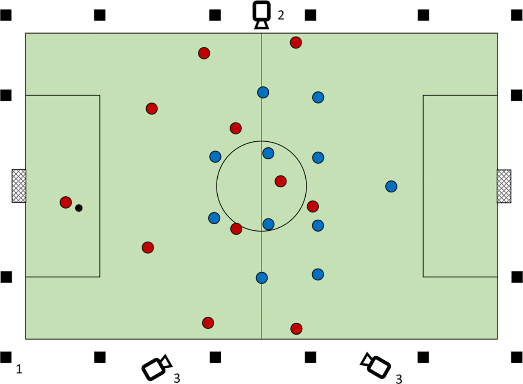
I tried to predict the dots in their moving random pattern, which sometimes seemed to be in sync, like a beautiful, even magical kind of alchemy, because there was a rhythm, I was sure, like the dots were almost a ballet, dancing before my eyes.
I wrote to the Tate Modern archives to try and trace this work of art:
To be fair, I didn’t give The Tate Modern much to go on, I mean, seriously, what did I expect with a title, “Conceptual digital modern art of football match simulation named Brain”?

Like I said, maybe it was just my imagination.
But I think science can explain the art of these seemingly random pattern of 22 red and blue dots moving—even though the instigator may have just been in my imagination—which actually wasn’t random at all: It’s the game of football without the football.
PART 2: What does science say about random red and blue moving dots?
The rhythm, or sense of movement, of the dots together suggested an overriding purpose to me but the pattern wasn’t clear without the ball.
The football being that perfect symmetry of infinite three-dimensional possibility which can go anywhere depending on the angle at which it is hit.
What are the rules of soccer?
The first set of football rules were proposed by Eton in 1815 and documented in Cambridge in 1848.
Initially, the simplest and most common tactical formation at the time was 1-1-9, emphasising dribbling rather than passing, like in a line-up for a race between nine strikers running to score. Picture them all running at once, like in the 100m, dribbling the ball, whoever had it, and ignoring each other! (Duh!)
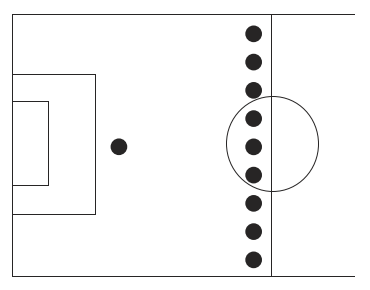
This arrangement would sadly continue, until one day, surprise, surprise, the first soccer system, "The Classical System" or "Pyramid" was introduced in 1884, consisting of one goalkeeper, two defenders, three midfielders and five forwards (1-2-3-5), who actually passed the ball! Genius!
It is considered the first system because it embodied defense, midfield and attack, and therefore was more of a collective approach—rather than an individual one—prioritizing, like I said, the passing of the ball. I have to repeat it, because it took them so long to get the idea!
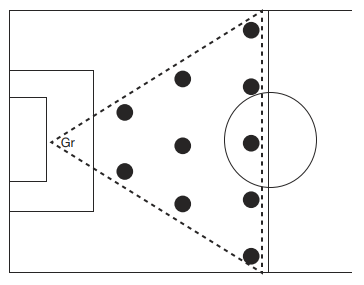
In 1932 Herbert Chapman, Arsenal's Coach, following a change of the off-side rule in 1925, introduced the "WM" system (1-3-2-2-3) which for the first time, balanced attack and defense. And this was clever, because it involved more than passing, it was passing in formation, like beautiful synchronous swimming.
Interestingly, if you magically squint, this was also known as the ‘Magic Square’ because of the proximity of the four players in the middle. Can you see it? Perhaps the other team couldn’t, because it was so successful, it took the other side by storm and was, gloriously, well, magical!
Today, there are many other team formations (e.g. 4-2-3-1 vs. 3-5-2 ) and they are scientifically the essence of tactics to determine how players will behave in order to win:
“The application of team formations, i.e. the change of team formations is one of the most efficient instruments for coaches to change and control the players‘ behavior and thus directly influences game performance.”1
This is also important because a team is continuously switching between the two opposite phases of attack and defence depending on their success at winning, gaining possession of, or losing, the ball, respectively.
It is critical to note that we are moving from individual to collective action in these phases:
"In the defensive phase, players continuously attempt to neutralize attackers’ actions to achieve a stable position in order to regain possession of the ball; whereas in the offensive phase, they intend to generate, in a self-organized way, disorder in the opposite defence with the aim of upsetting the balance and scoring a goal (Garganta, 1996)."2
[H3] The Offensive Phase
There are two main attacking styles in the offensive phase which are a) possession soccer (or tiki-taka style, like the sound, as they say in Spain) and, b) direct play (or long-ball approach).3
a) Possession style involves making rapid continuous passes over short distances from defence to midfield to establish the ball in the final third of the pitch.
b) Direct play style involves getting the ball into the final third of the pitch as quickly as possible, by a goal kick or long passes over a large distance.
There are two main defensive styles in the defensive phase which are a) pressing and b) defensive safety.4
a) Pressing style is when the team collectively tries to win back the ball by one or two players attacking the player with the ball while the others try and block the player from passing.

b) Defensive safety style, also known as Catenaccio (“door-bolt”) in Italy, involves a ‘sweeper’ coming behind the defensive line to clean up attacks and initiate counterplays. It comes from the idea of a fisherman using a second net to sweep in the fish the first net has missed!
You almost need to watch soccer differently to fully appreciate the offensive and defensive phases, but before we consider my different ways of watching soccer, it should be noted that it is important that you decide which team you will be supporting at the outset and stick to it.
Otherwise, there is no consequence of losing the offensive phase or, obviously, scoring a goal!
My son and I always determine who is supporting which team before kick-off, and to increase the stakes, our prediction for the final score after 10 minutes of watching. Do this with your partner to up the ante, it’s fun(!), whichever teams are playing, like the gamification of a game! (Shamelessly, I also have been known to lay a £1 bet, after consulting my fantastic ‘Besoccer’ app, but betting is the quickest way to poverty!)
Three ways of watching
In my view, there are three ways of watching football: 1) Follow-the-ball 2) Predict-the-sequence, and 3) assess-the-strategy.

Firstly, you can follow-the-ball. If I do it right, it can almost be meditative, because there is nothing closer to being in the present moment more, than watching a simple moving ball. This is like the ‘what’ rather than the ‘why’.
Secondly, you can predict-the-sequence. This is when I try to predict where the player will kick the ball next. This is like the ‘why’ rather than the ‘what’, above. Like in chess, I try to predict one, two or three steps ahead, drawing the dot-to-dot like an overlay on the pitch. This is comparable to the tactics of the game because the structure of the team will determine who is within proximity to pass to.
Thirdly, I can assess-the-strategy. This is when I view the team as a whole, almost like squinting at the screen, until I just see the dots of colour in a pattern.
How effective is the team’s defence, midfield and attack, compared to the other team’s?
What are their strengths, weaknesses opportunities and threats? If there is a weakness, why is that?
Or, perhaps, more like the existentialist, why are they here?
When a team plays together, and you see the team structure like moving dots, it is like the beautiful team becomes a single beautiful mind.
Inevitably, I switch between all three ways of watching football throughout the game and, of course, without consciously labelling them or necessarily being conscious of this. But there are almost infinite possibilities to consider and every minute that passes(!) excuse the pun, the pressure to find a solution increases because the game is obviously finite.
And obviously the reward for all my hard work watching is ultimately, and hopefully, a goal!
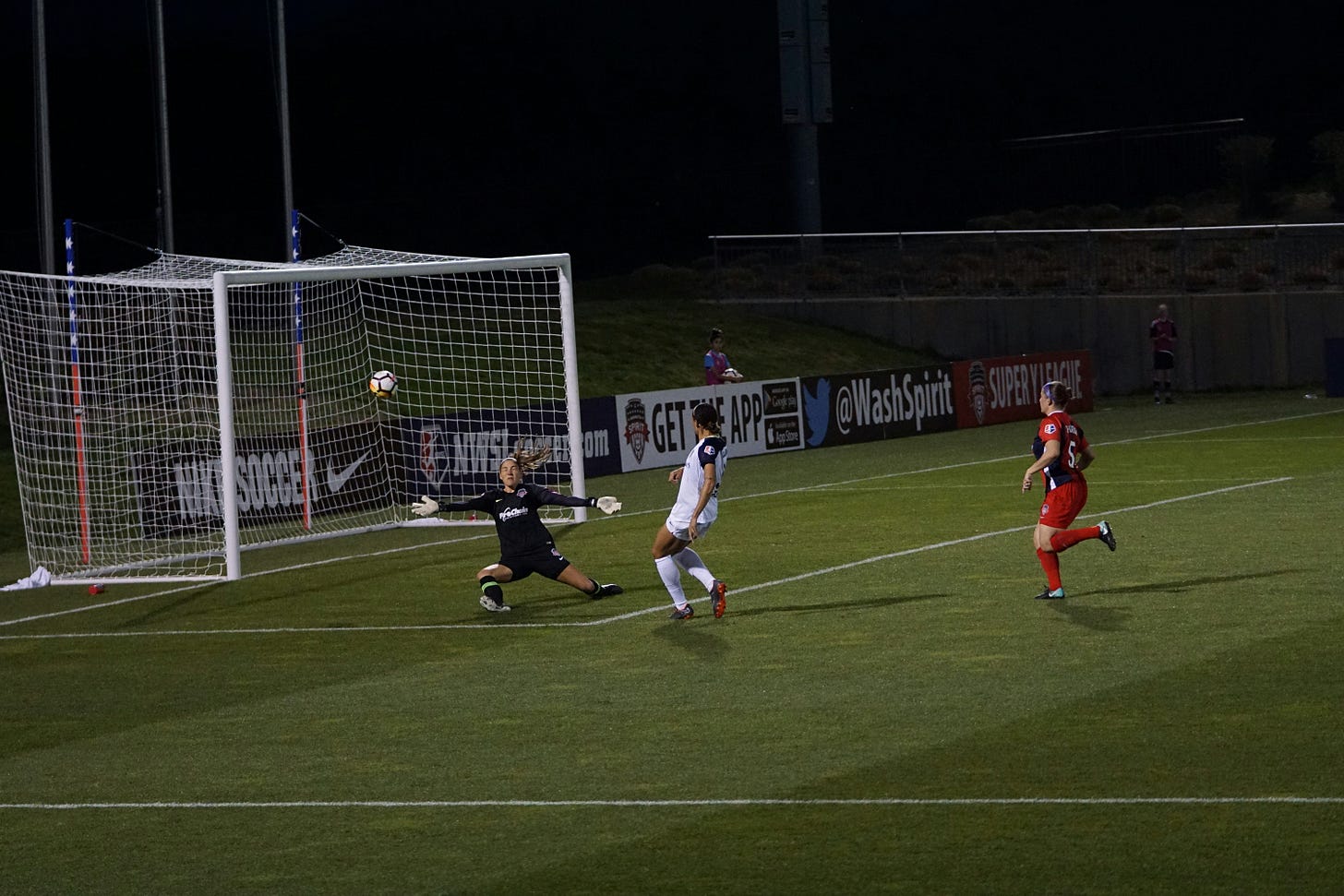
The significance of this has been described in many ways, but perhaps the most dramatic and shocking (bad language warning) is Mark Simpson’s homoerotic description of the ‘fuckers’ and ‘fucked’:
“Simpson remarks that ‘it is in the “goal-fuck” that the player achieves both his goal and manhood – “a fucker” – and the (semi-)fulfilment of his homoerotic desire – “a fucked”.’ The goal marks the moment in which full “penetration” of the opponent’s protected physical space is realised, testifying to the virility and phallic potency of the striker who forces this breach, but also occasioning the habitual celebrations on the field and in the stand, those ‘tremendous displays of physical affection and ecstasy of male for male’, in which ‘young men and old…express for a moment, within the sacred walls of the football ground, a love that is as exuberant and irrepressible as it is inconceivable outside those walls.’ Joyful physical contact from his fellow players is the male footballer’s ‘reward’ for having scored a goal: thus in the goal’s immediate aftermath the scorer transitions from “fucker” to “fucked”. 5
While I don’t necessarily agree with this conclusion, there is no doubt about the ecstatic reaction of players and fans to a goal being scored, and I have felt a physical, not sexual(!), shiver watching too.
Although, it must be said, also the painful disappointment if a goal has been let in by my team!
However, the theme of homoeroticism in soccer has also been explored in contemporary art— contrary to the common macho perception of the game—and if nothing else will make you look at the game differently, I will end by sharing this famous piece called “Touch” from the Royal Academy, of the ‘beautiful’ game being played naked! (But please keep your eyes on the ball!!!)
Conclusion
The more you watch football, the more you will learn, from player progression to team progression, to League cup, FA cup, European UEFA cup and World Cup!
And there are no barriers-to-entry from enjoying the game if you’re watching at home— the UEFA cup and World Cup matches are free on terrestrial TV in the UK— except perhaps your NOW subscription to Sky Sports for the others.
There is even an Emmy-award winning Netflix documentary, “Welcome to Wrexham” where Hollywood meets soccer in the form of Rob McElhenney (It’s Always Sunny in Philadelphia) and Ryan Reynolds (Deadpool) purchasing Wrexham Football Club and following the team as it climbs the league. It has done the worst-club-in-the-world (spoiler alert: originally, I hasten to add!) infinite justice, not just for the club but the entire deprived town, and converted, I suspect, millions to the game!
And, and, and, even great contemporary writers like Nick Hornby have written about the beautiful game in his amazing debut memoir, “Fever Pitch” (he is also on Substack, here, so check out his inspiring, “A Fan’s Notes,” which isn’t just about football, btw, and is a constant source of inspiration to me, like for this article. Thanks Saint Nick!)
There is an endlessly fascinating world of soccer at the intersection of art, culture and science, besides being a sport, which I hope I may have, in some small way, shared with you today.
So, although some die-hard lifetime-pledged team-family-alliance supporters might make you think otherwise—that you need to actually be there every week shivering in the stadium—soccer is a game for everyone, scarf or no scarf, kit or no kit!!!
And you don’t even need to be able to kick a ball yourself, like me, to win; in fact, living vicariously, I am the best player (and coach!) on the field every week from the comfort of my own armchair. Just like my dad. The only difference is I never make my kids play Sunday league!
You don’t know what you’re missing!
Thank you for reading and if you learnt anything from reading this article you didn’t know before about soccer, please share it with your friends, so they might appreciate soccer more, too. Or else, I’m getting my kit off—you have been warned!!!
If you’d like to buy me a coffee you can do so below.
And if you don’t want to miss the next deep dive in a fortnight—which may be just what you need to solve your problem—subscribe for FREE below (No paid option, Whichwayhow.com is always free!)
If you enjoyed this post, you may also enjoy: Whichwayhow to do Breathwork, Whichwayhow to Journal, Whichwayhow to Reverse Cavities and Whichwayhow to be a hero (of the everyday!)
References
Memmert D, Raabe D, Schwab S, Rein R. A tactical comparison of the 4-2-3-1 and 3-5-2 formation in soccer: A theory-oriented, experimental approach based on positional data in an 11 vs. 11 game set-up. PLoS One. 2019 Jan 30;14(1):e0210191. doi: 10.1371/journal.pone.0210191. PMID: 30699148; PMCID: PMC6353547.
Football intelligence : training and tactics for soccer success. Israel Teoldo, José Guilherme, and Júlio Garganta. New York, N.Y. : Routledge, 2022.
Bangsbo, J., and Peitersen, B. 2000b. Offensive soccer tactics. Champaign, IL: Human Kinetics.
Bangsbo, J., and Peitersen, B. 2000c. Defensive soccer tactics. Champaign, IL: Human Kinetics
The Art of Football: Visual Culture and the Beautiful Game, 1992-2016. A thesis submitted to the University of Manchester for the degree of Doctor of Philosophy in the Faculty of Humanities. Luke Healey 2016



